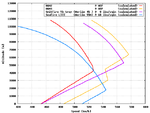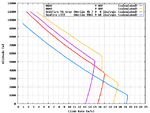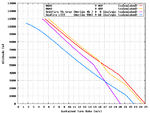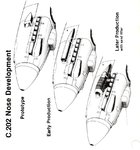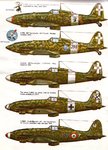Hi Parmigiano,
>Totally different technology, i.e. the DB601 of the MC202 (and of the Bf109 Trop) had fuel injection, the Merlin had carburettors.
Hm, I don't think this had much to do with it. The advantage of the Axis fighters was the "clamshell" shutter of their air filters that made it possible to feed unfiltered air under ram pressure to the engine once the aircraft was above the altitude at which dust was usually found. This air filter type was an Italian invention, and it seems to have been highly successful - though it inevitably surrendered a bit of performance in comparison to filter-less aircraft, too.
Regards,
Henning (HoHun)
>Totally different technology, i.e. the DB601 of the MC202 (and of the Bf109 Trop) had fuel injection, the Merlin had carburettors.
Hm, I don't think this had much to do with it. The advantage of the Axis fighters was the "clamshell" shutter of their air filters that made it possible to feed unfiltered air under ram pressure to the engine once the aircraft was above the altitude at which dust was usually found. This air filter type was an Italian invention, and it seems to have been highly successful - though it inevitably surrendered a bit of performance in comparison to filter-less aircraft, too.
Regards,
Henning (HoHun)

